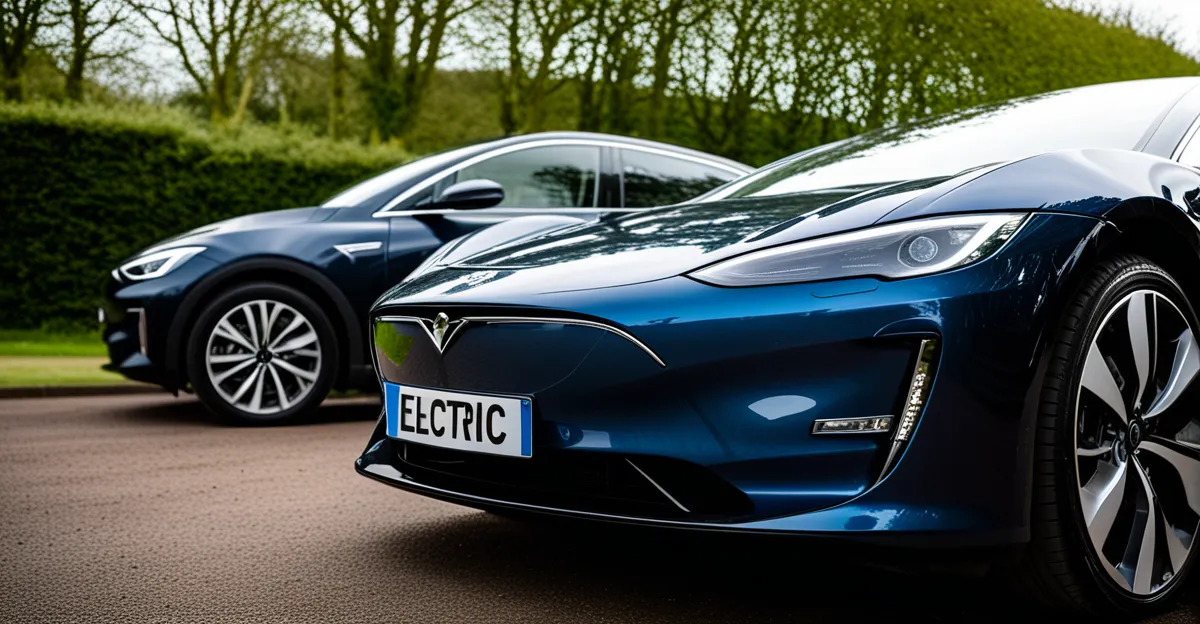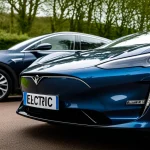Lifecycle Environmental Impact of Electric Vehicles in the UK
Understanding the EV lifecycle analysis is key to assessing the true environmental impact of electric vehicles within the UK automotive industry. This assessment spans multiple stages: production, operation, and end-of-life disposal or recycling.
In the production phase, emissions are mainly attributed to battery manufacturing, which requires significant energy and resource input. However, during the operational phase, EVs generate substantially lower greenhouse gas emissions compared to petrol and diesel vehicles, primarily because of their electricity sourcing. The UK’s increasing grid decarbonisation enhances this benefit, reducing the overall carbon footprint of EVs during use.
In parallel : How do UK car manufacturers ensure quality and safety standards?
End-of-life considerations are also crucial. The recycling and repurposing of EV components, particularly batteries, mitigate some environmental impacts linked to disposal. Current technologies aim to recover valuable materials, promoting sustainability in the automotive sector.
Comparatively, despite higher initial emissions from manufacturing, EVs typically result in lower lifetime emissions than traditional vehicles. This outcome is driven by cleaner electricity and improved efficiency in use, underscoring the environmental advantages integral to EV adoption in the UK context.
Topic to read : What challenges do UK automakers face in the transition to electric vehicles?
Battery Production, Resource Use, and Sustainability
Battery production is a critical phase in the EV lifecycle analysis with significant environmental implications. The extraction of lithium, cobalt, and nickel, essential for lithium-ion batteries, involves intensive resource use and can lead to habitat disruption, water depletion, and pollution. In the UK automotive industry, managing these impacts has become a priority, encouraging innovation in battery recycling and sustainability initiatives.
Recycling EV batteries reduces the demand for freshly mined materials, lessening environmental strain and supporting a circular economy. Current technologies in the UK enable recovery of valuable metals, though challenges remain in achieving efficient, large-scale processing. Emphasis is also on developing alternative battery chemistries to decrease reliance on scarce resources.
Sustainability efforts aim to close the loop by integrating battery reuse in second-life applications, such as energy storage, before recycling. These strategies target reducing the carbon footprint from manufacturing, reinforcing positive environmental impact throughout the EV lifecycle. Effective resource use combined with advances in recycling contributes to the growing sustainability of EVs, aligning industry practices with the UK’s carbon reduction goals.
Electricity Generation Mix and Operational Emissions
The UK electricity mix profoundly influences the operational emissions linked to electric vehicles, shaping their overall environmental impact. As the grid incorporates a higher share of renewable sources like wind and solar, the carbon intensity of electricity used for EV charging decreases significantly. This trend supports continual reduction in the carbon footprint of EVs during their use phase.
Understanding the UK electricity mix is vital to grasp why EVs outperform traditional vehicles in emissions. Regions with greater renewable generation see lower emissions per kilowatt-hour, directly reducing the emissions from EV operation. For example, areas reliant on fossil fuels for electricity present higher operational emissions than those powered by low-carbon sources.
Ongoing grid decarbonisation efforts include expanding clean energy, modernising infrastructure, and incentivising demand-side management to align EV charging with renewable availability. These measures enhance sustainability across the UK automotive industry by ensuring EVs operate with minimal environmental harm.
Projected improvements in the grid will continue to lower the operational emissions tied to EVs, reinforcing their environmental advantages in the coming decades. The dynamic nature of the grid means operational emissions are a moving target, always improving alongside innovations in energy generation.
Comparative Analysis: Electric vs Traditional Vehicles in the UK
Exploring EV vs petrol/diesel cars highlights distinct differences in emissions throughout their lifecycles. Tailpipe emissions from petrol and diesel vehicles release significant greenhouse gases and pollutants, contributing heavily to poor air quality. In contrast, EVs produce no direct tailpipe emissions, significantly reducing local air pollution.
Upstream emissions tell a more nuanced story. Gasoline and diesel extraction, refining, and distribution involve continuous fossil fuel use, maintaining a high overall carbon footprint. EVs, though initially burdened by energy-intensive battery production, compensate during operation through lower emissions, especially when charged with UK’s increasingly clean electricity mix. This trade-off means EVs generally achieve lower lifetime emissions compared to traditional vehicles across the UK automotive market.
National statistics reinforce this: as grid decarbonisation progresses, the lifetime carbon footprint of EVs declines, widening the environmental advantage over combustion engines. Additionally, the adoption of EVs supports UK policy goals for cleaner transport and reduced greenhouse gases. This comparative evidence underlines why the automotive industry actively shifts toward electric models to meet sustainability targets and improve public health outcomes.
Government Policies, Incentives and Regulatory Context
The UK EV policy framework plays a pivotal role in accelerating the shift towards electric vehicles, directly influencing the environmental impact of the UK automotive industry. Central to this are ambitious zero-emission mandates that require manufacturers to phase out petrol and diesel vehicles by set deadlines, promoting widespread EV adoption.
Government incentives, such as purchase grants and tax reductions, lower barriers for consumers, making EVs more accessible. These policies aim to stimulate demand while supporting industry shifts to cleaner technologies. For instance, grants reduce upfront costs, while tax benefits encourage businesses to transition their fleets, collectively reducing the carbon footprint of road transport.
Environmental regulations enforce strict emissions targets that compel manufacturers to innovate in battery production, energy efficiency, and vehicle design. The alignment between regulations and incentives creates a robust ecosystem encouraging sustainable practices across the EV lifecycle.
Together, these measures drive industry transformation and foster closer alignment with the UK’s broader climate goals. By integrating policy, incentives, and regulation, the government effectively supports a cleaner automotive market, confirming the pivotal relationship between regulation and the ongoing reduction of EV environmental impact.
Real-World Case Studies and Data from the UK Automotive Sector
Real-world data plays a crucial role in validating the environmental impact claims surrounding electric vehicles. Case studies from the UK automotive sector show significant reductions in emissions when fleets transition to EVs. For example, several municipal bus operators and delivery companies have reported up to 40% decreases in operational emissions after electrification, directly reducing the carbon footprint of their transport activities.
One UK fleet study assessed lifetime emissions, confirming that even when considering manufacturing emissions, EVs emit fewer greenhouse gases than comparable petrol vehicles. This aligns with broader lifecycle assessments, reinforcing the benefits of early and widespread EV adoption across the sector. Importantly, the data highlights the influence of local electricity sourcing—fleets charged in areas with greener grids achieve more substantial emission reductions.
Industry partnerships are accelerating innovation by enabling continuous monitoring and adapting strategies to enhance sustainability. For instance, collaborative research projects focus on improving battery recycling and optimising charging to align with renewable energy availability, further mitigating environmental effects. These real-world insights not only bolster confidence in EVs’ ecological advantages but also guide future policies and business practices within the UK’s evolving automotive market.










